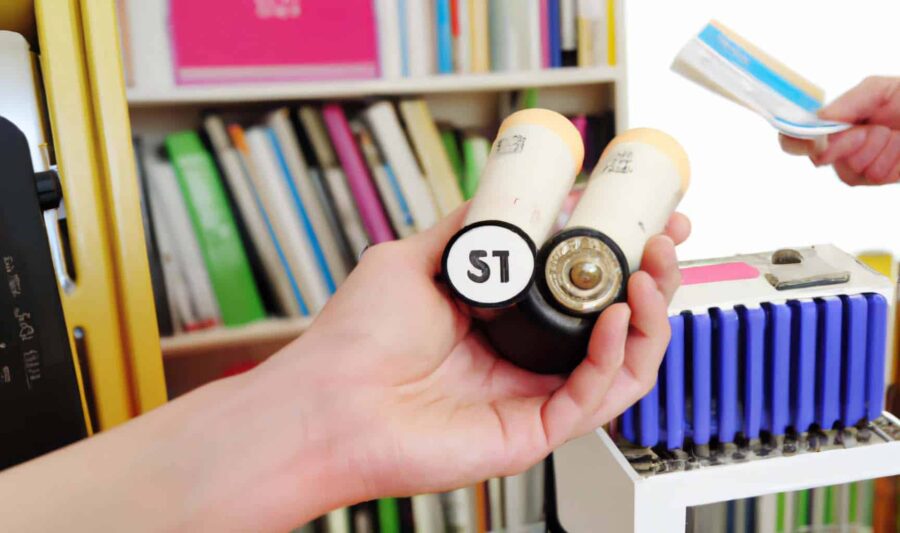If you’re like most people, you probably don’t know how much a capacitor for AC costs. Well, the short answer is that it depends on the specific capacitor and the application. In this blog post, we’ll take a look at some of the factors that contribute to the cost of a capacitor for AC so that you can be more informed when making your purchase.
What’s inside a capacitor?
A capacitor is made up of two metal plates separated by an insulating material called dielectric. When AC voltage is applied to the plates, an electrical field is created in the dielectric which stores energy. The amount of energy stored in the capacitor is determined by its capacitance which is measured in Farads. Capacitors are used to filter AC signals, to block DC voltages or current, and to store energy. Capacitors come in many different sizes and have a variety of applications.
How does capacitance affect cost?
The capacitance of a capacitor determines how much energy it can store and therefore how much it will cost. A higher capacitance means more energy storage and a higher price tag. However, not all applications require a high-energy storage capacitor so it’s important to know what you need before making your purchase. One example where low-energy storage capacitors are used are in power factor correction circuits where only small amounts of power need to be stored. On the other hand, high-energy storage capacitors are used in applications such as electrolytic metal refining where large amounts of power need to be stored.
What type of capacitor do you need for your application?
Capacitors are one of the most important components in an AC circuit. There are many different types of capacitors, each with their own unique properties and applications. So, how do you know which capacitor is right for your application?
In this article, we’ll discuss the different types of capacitors and their applications. We’ll also provide a few tips on how to choose the right capacitor for your project.
There are two main types of capacitors: electrolytic and non-electrolytic. Electrolytic capacitors are made with thin sheets of metal that are separated by an electrolyte solution. They have a high capacity and are typically used in power supplies and motor control circuits. Non-electrolytic capacitors, on the other hand, are made with two metal plates that are separated by a dielectric material.
Aluminum Electrolytic Capacitors (Aluminum Electrolytic Capacitor)
These capacitors can store high amounts of energy but have a short life span and need frequent replacement. Capacitors are also used in power supplies to filter out high-frequency noise.
Capacitors are made from a metallic foil separated by an insulator, the dielectric material, with a second metallic foil on the opposite side. Capacitors are polarized so that the charge is stored on one of the foils (the positive terminal, or anode). In a capacitor, when the voltage applied to the terminals is zero, no current flows through it.
Polyester Film Capacitors (Film capacitor)
These capacitors are used in high-frequency applications where large amounts of power need to be stored.
They are used in the transmitters of SSB and CW (Morse code) radio stations. They are also used to allow non-switching power supplies to work at high frequencies.
Tantalum Capacitors (Tantalum Electrolytic Capacitor)
These capacitors can store high amounts of energy, but they’re expensive and have a short life span.
In the future, nanotechnology will allow us to develop capacitors that store more electricity than conventional ones, but also have a longer lifespan.
The project has been featured in the 2017-2018 edition of the European Commission’s Science and Technology magazine.
Tantalum Capacitors (Tantalum Electrolytic Capacitors)
These capacitors can store large amounts of energy, but they’re expensive and have a short life span.
Today’s capacitors, in contrast, are small and cheap but can’t hold much of a charge.
Researchers at Purdue University have found a way to make both types of capacitor work together. Their hybrid device combines thin films coated with nanometer-sized particles that act as tiny batteries.
Mica Capacitors (Mica Sheet Capacitor)
These capacitors are used in high-frequency applications where large amounts of power need to be stored.
To prevent oscillation, the output side of the capacitor must be connected to a resistor.
Silver Mica Capacitors (Silver Mica Sheet Capacitor)
These capacitors are used in high-frequency applications where large amounts of power need to be stored.
Ceramic Capacitors (Ceramic Disc Capacitors)
These capacitors are used in high-frequency applications where large amounts of power need to be stored.
They are also used to block high-frequency noise when it is necessary to keep a signal clean.
Glass Disc Capacitors (Glass-Disc Capacitors)
These capacitors are used in high-frequency applications where large amounts of power need to be stored.
The first use for the non-polarized capacitor is in an antenna. The antenna can be used as a receiving or transmitting device. Antennas are used to send and receive electromagnetic waves at various frequencies and wavelengths.
Epoxy Capacitors (Epoxy-Resin Capacitor)
These capacitors can store large amounts of energy, but they’re expensive and have a short life span.
Now, researchers from the University of California at San Diego have developed a new type of graphene-based capacitor — one that is cheaper and lasts longer than current capacitors. The study was published in the journal Nature Nanotechnology.
Wax-Paper Capacitors (Wax-Paper Paper Capacitor)
These capacitors are used in high-frequency applications where large amounts of power need to be stored.
How do different materials affect the price of a capacitor?
The materials used in manufacturing process can have a major impact on a capacitors price. Copper has been used extensively in capacitor technology for over 40 years, but due to its high cost and limited availability it has been replaced by capacitor technologies based on polyester film or ceramic materials.
What are the different types of capacitors?
Types of capacitors include the electrolytic, parallel-plate, and coaxial capacitors.
The electrolytic capacitor is a polarized capacitor that consists of two electrodes immersed in an electrolyte. The electrodes are connected to the two opposite terminals of the capacitor.
What material is used to make the plates in a capacitor?
The plates in a capacitor are usually made from aluminum foil which is then coated with an oxide layer.
How does a capacitor work?
A capacitor works by storing an electrical charge on its plates and then releasing it when needed. There are two types of capacitors available: ceramic capacitors, which are made from ceramic materials; and electrolytic capacitors, which are made from two metal electrodes with liquid electrolyte in between.
Does the size of a capacitor affect how much power it can store?
Most capacitors work best when the plates are small, about one micrometer thick for aluminum foil or less than 100 nanometers thick for ceramic material.
The more surface area, the more electric charge can be stored.
But for some applications, the high voltages required to store these charges are not available in a single capacitor.
Which is better, an aluminum foil or ceramic capacitor?
Because they’re smaller, aluminum foil capacitors can store more energy than ceramic ones. They also tend to be less expensive and last longer than ceramic capacitors.
These capacitors are used in high-frequency applications where large amounts of power need to be stored. They are also used in power supplies and converters.
They have a positive temperature coefficient, which means their capacitance increases as the temperature rises. To compensate for this, many aluminum foil capacitors are constructed with an internal resistance to prevent overheating.










Leave a Reply
Your email is safe with us.